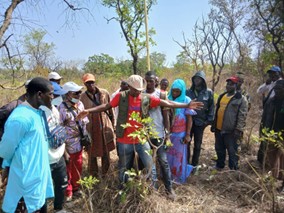In line with our commitment, we commissioned the Centre Interdisciplinaire de Recherche en Ethique (CIRE) at the University of Lausanne to take a critical look at our actions and identify areas for attention. We were impressed by CIRE’s interdisciplinary approach, which brings together expertise in environmental ethics, health, education and care. With its contextualised approach, CIRE seemed to us to be the institution most likely to help us make progress. We certainly think we’re doing the right things and doing them well, but there’s always room for improvement.
The CIRE report meets our expectations exactly. We are reassured that no new issues have been raised. And we are committed to finding solutions to the issues raised:
- We will be addressing the points of attention relating to carbon credits and the selection of investors to whom we sell them in subsequent news items.
- As far as the promotion of women is concerned, we are aware that there is still a lot to be done. From strengthening existing women’s groups to training young girls, not forgetting safeguarding the forestry knowledge held by the elders, the themes are many and varied. We also want to make better use of the skills of our partner GUIDRE, which has a perfect command of training courses for women (literacy, maternity care, prevention of female circumcision, etc.). During our last visit to Damaro, we met another NGO, a partner of GUIDRE, which supports the development of women’s market gardening, and with which we are looking forward to working. In short, the field of possibilities is almost infinite. It’s up to us to exploit it, within the framework of our statutes.
- The issue of remuneration for our seed-families will be addressed in June, when the first ‘carbon income’ is distributed in the Linko sub-prefecture. We will ensure that a proportion of this income is devoted to the seed-families and village communities. And this will be the subject of deliberations within the Cooperative Committee (made up, as you will recall, mostly of women). For the supervisors, our ambition is to secure their jobs as much as possible, at least for the three years of the plantation phase. After starting with 6-month contracts, then 10-month contracts, they now have 12-month contracts. We are now looking at ways of guaranteeing them real social benefits as well. From the outset, we have been paying amounts to deal with sickness and to finance their pension provision, but we would like to see accident/sickness insurance and pension funds managed by specialist bodies.
- The tension between free and informed consent and the social pressure linked to the constitution of the Cooperative is complex. The aim of all institutions for the governance of the commons, as suggested by Elinor Ostrom, is precisely to introduce rules, and therefore constraints, to better manage the commons. And it is true that this exerts social pressure. Where is the line between group pressure (and the benefits of joining forces) and coercion? How can we ensure that this social pressure is not exerted to the detriment of the weakest? On this question, deliberation, as recommended by the CIRE, is certainly the best way to highlight any grievances linked to ‘too much group pressure’.








